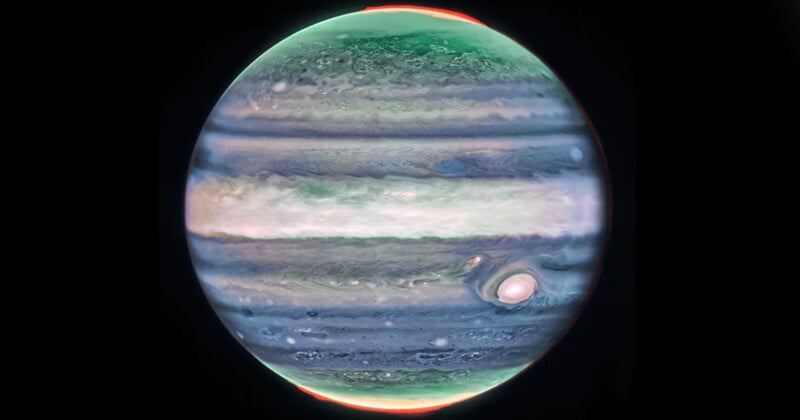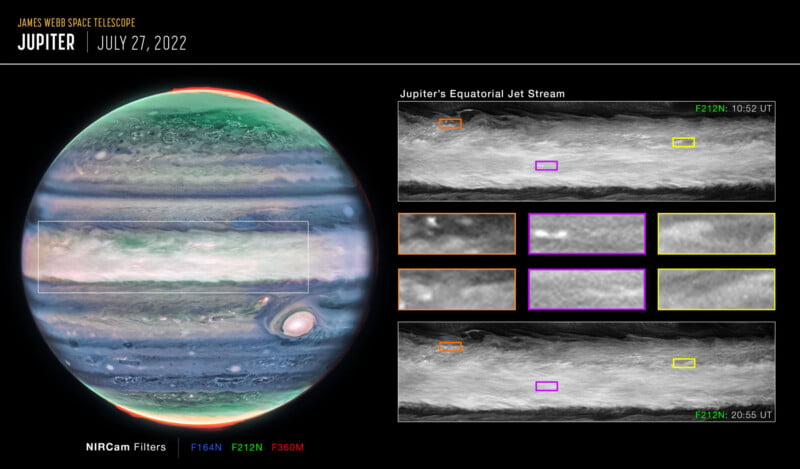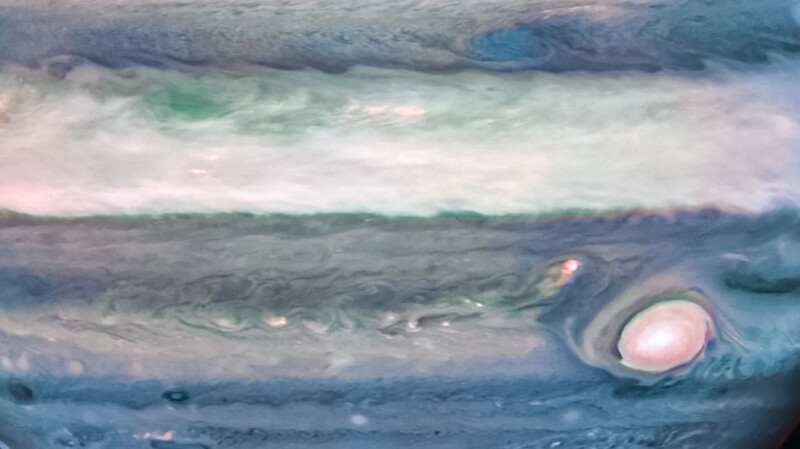Webb Snaps Never-Before-Seen Feature in Jupiter’s Atmosphere

The James Webb Space Telescope has discovered a high-speed jet stream in Jupiter’s lower stratosphere, approximately 25 miles above the planet’s clouds.
The jet stream, positioned over Jupiter’s equator, spans over 3,000 miles with wind speeds of 320 miles per hour — twice the velocity of sustained winds found in a Category 5 hurricane on Earth.
The discovery was published in a study in the journal Nature Astronomy on October 19, with lead author Ricardo Hueso, a physics lecturer at the University of the Basque Country in Bilbao, Spain, expressing his amazement.
“This is something that totally surprised us. What we have always seen as blurred hazes in Jupiter’s atmosphere now appear as crisp features that we can track along with the planet’s fast rotation,” he says.

Jupiter, Earth’s colossal neighbor, though fundamentally different in composition, shares the concept of a layered atmosphere. Previous missions and telescopic observations have focused on deciphering the intricate interplay of these turbulent layers and weather patterns, including the renowned Great Red Spot and ammonia-laden clouds.
What sets the James Webb Space Telescope apart is its unique ability to explore the higher-altitude layers, specifically those situated between 15 to 30 miles above Jupiter’s cloud cover. This advanced perspective has enabled the telescope to reveal previously elusive details.
Imke de Pater, a study co-author and professor emeritus of astronomy and planetary science at the University of California, Berkeley, says: “Even though various ground-based telescopes and spacecraft have observed the Jovian system’s changing weather patterns, Webb has already provided new findings on Jupiter’s rings, satellites, and its atmosphere.”

The discovery of the high-speed jet stream was the result of a collaborative effort between Webb and NASA’s Hubble Space Telescope. Webb’s observations honed in on smaller cloud features, while Hubble delved into the equatorial storm systems. This joint endeavor provided a comprehensive understanding of Jupiter’s intricate atmospheric dynamics.
“We knew the different wavelengths of Webb and Hubble would reveal the three-dimensional structure of storm clouds, but we were also able to use the timing of the data to see how rapidly storms develop,” says Michael Wong of the University of California, Berkeley, who led the associated Hubble observations and was a member of the new study.
Space notes that the comparison of the two major space telescopes can help scientists understand how wind speeds on Jupiter change with altitude and generate “wind shears.”
“Jupiter has a complicated but repeatable pattern of winds and temperatures in its equatorial stratosphere, high above the winds in the clouds and hazes measured at these wavelengths,” says member of the study Leigh Fletcher of the University of Leicester in the United Kingdom.
“If the strength of this new jet is connected to this oscillating stratospheric pattern, we might expect the jet to vary considerably over the next two to four years.”
Image credits: NASA/ESA/CSA/STScI